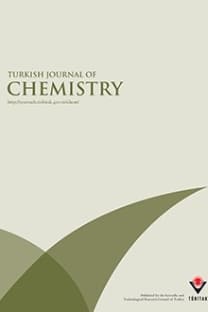Influence of reaction parameters on the synthesis of surfactant-assisted tin oxide nanoparticles
Nanoparticles, tin oxide, hydrothermal, surfactant, reaction parameters, microscopy
Influence of reaction parameters on the synthesis of surfactant-assisted tin oxide nanoparticles
Nanoparticles, tin oxide, hydrothermal, surfactant, reaction parameters, microscopy,
- ISSN: 1300-0527
- Yayın Aralığı: 6
- Yayıncı: TÜBİTAK
Antimicrobial properties and DNA interactions studies of 3-hetarylazoquinoline-2,4-diol compounds
Fatma ÖZTÜRK, Leyla AÇIK, İzzet ŞENER, Fikret KARCI
Novel biologically active glycosides from the aerial parts of Cephalaria gazipashensis
Nazlı Böke Sarikahya And Süheyla KIRMIZIGÜL
Synthesis and evaluation of enzyme inhibitory potential of some derivatives of scopolamine
Durre SHAHWAR, Muhammad Asam RAZA, Tania KHAN
Influence of reaction parameters on the synthesis of surfactant-assisted tin oxide nanoparticles
Muhammad Akhyar FARRUKH, Prisca Tan And Rohana ADNAN
Syed Ali Raza NAQVI, Malik Muhammad ISHFAQ, Zulfiqar Ali KHAN
Olcay ŞENDİL, Nabeel MOHAMMED, Güler SOMER
Hakan ÇİFTÇİ, Zeki ÖKTEM, Hasan Nur TESTERECİ
Theory of adsorption equilibria analysis based on general equilibrium constant expression
Hasan KÜÇÜKBAY, Nihat ŞİRECİ, Ülkü YILMAZ, Selma DENİZ, Mehmet AKKURT
Muhammet ÖZYANIK, Serpil DEMİRCİ, Hakan BEKTAŞ, Neslihan DEMİRBAŞ
